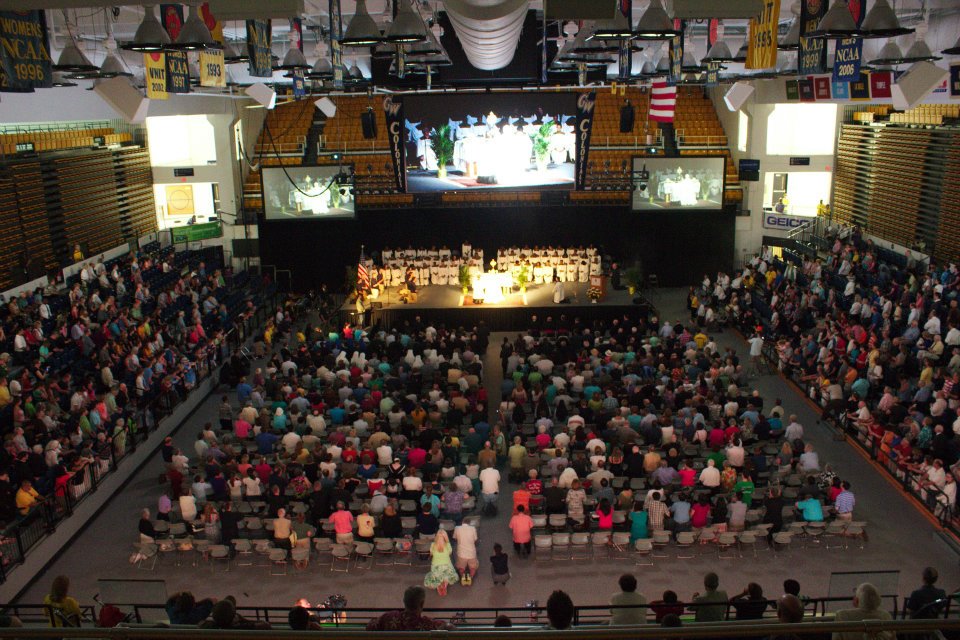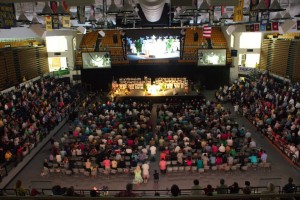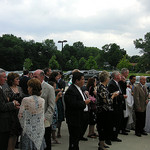One of the most significant losses in the modern era has been the loss of the Biblical narrative in the hearts and minds of most people. Scripture is the story of the human family, told by God himself. In story form He tells us how we were made and why, what happened why that things are the way they are today. Why do we have infinite longing in a finite world? Why do we struggle with sin so much? How can we be rescued from sin and death and find our hearts true satisfaction? The Biblical narrative answers these sorts of questions and more.
Thus, the Biblical story or narrative, mediates reality to us in a memorable way. God, like any good Father, tells us our story and asks us to tell our own children. To know our story is to understand ourselves in relation to God, the world and others.
And what a story it is! It has more of passion, conflict and drama than any great epic. It is the “greatest story ever told” but most people have lost its details and no longer know the story. Hence they are detached from the reality that the story mediates. Many are adrift in a world of little meaning, or competing “meanings” with no way to sort it all out. They have few explanations as to the most basic questions of the meaning of life, the meaning of suffering, our ultimate destiny and so forth. Without the story, life looses its meaning.
To illustrate the loss of the narrative, I was talking to Catholic seventh graders a couple of years ago and I made reference to Adam and Eve. As our discussion progressed it became evident to me that they did not really know who Adam and Eve were. They had heard the names before but couldn’t say who they really were, or what they had done. About the most erudite statement that came from one of the students was from a young man in the second row who said, “Aren’t they in the Bible or something?” No other specifics emerged from the discussion. I resolved that day to scrap our compartmentalized religious programs and switch every grade level to a “back to basics” program that emphasized the Biblical narrative.
How has this loss of the narrative happened? Some argue that the Church stopped telling the story. Poor preaching, poor catechesis and pretty soon no one knows the story any more. I do not doubt there is substance to this explanation. But the explanation is still too general for it hardly seems likely that “the Church” just decided one day to stop telling the story. What seems more specifically to have happened is that we stopped telling the story effectively. And what I would like to argue is that we lost touch with the “plot” of sacred Scripture and because of this we were no longer able to tell the story in a compelling and interesting way.
What then is a plot? The plot in a story is the focal point to which all the events and characters relate. It is like the center point of a wheel around which everything else revolves. Now a plot, if it is to be successful, always involves some sort of conflict or negative development that must be resolved. This is what holds our interest as the question emerges, “How will this problem be resolved?!” If, in scene one of story, everything is just fine, and scene two everything is fine and in scene three still fine, people start tuning out. It is the conflict or negative development that renders the plot interesting. Plots usually have five stages:
- Exposition – where we are introduced to the main characters and elements of the story.
- Conflict – where the negative development occurs that must be resolved.
- Climax – where the conflict reaches its highest point and the tension is greatest. Here there is often an epic battle, or experience of the conflict. And here the conflict is resolved usually by an heroic figure or striking event.
- Falling action – Here is shown the result of the climax, and its effects on the characters, setting, and proceeding events.
- Resolution – The Conflict having been resolved, this last stage of the story shows either a return to normality for the characters or an attainment of an even higher state for our characters than the situation than existed before the conflict. This results in a sense of catharsis (or release of tension and anxiety) for the reader.
What then is the plot of sacred scripture? Simply this:
Exposition – God created Man as an act of love and made him to live in union with his God. In the beginning Adam and Eve accepted this love and experienced a garden paradise. The heart of their happiness was to know the Lord and walk with Him in a loving and trusting relationship.
Conflict – But man, tempted by the devil, let his trust in his creator die in his heart and he willfully rejected the God who given him everything by listening to an evil tempter who had given him nothing. Adam rebelled against God and refused to be under his loving authority and care. This led to a complete unraveling of everything. Paradise vanished, Adam and Eve experienced a deep and personal disintegration of their inmost being.
Confused, ashamed, angry, accusatory and embarrassed they withdraw into hiding and cover up. They can no longer tolerate the presence and glory of the God who still loved them and must live apart from Him. God makes an initial promise to one day bring healing but when is not clear. So here is the initial conflict or negative development that defines the plot and rivets our attention.
How will this tragic development be resolved? Will Adam and Eve turn back to God? Will they ever be able to experience peace in his presence again? How will Adam and Eve ever recover from the self inflicted wounds they have? A great love story between humanity and God has gone very sour. Will our lovers ever reunite? Will paradise reopen again? When will God act? How?
In continually rising action things go from bad to worse: Adam and Eve’s rebelliousness is passed on to their children as Cain kills Abel. Wickedness multiplies so rapidly that God must take action, first confusing the languages of Man and humbling him at Babel, then practically starting all over again with the flood.
In a sudden development in the plot God chooses the family of Abram and his descendants to set the initial stage for a final conflict with his opponent the devil and to restore Man. Through a series of covenants and actions God prepares a people to receive the great Savior who will resolve this terrible problem. But God must take this chosen people through a series of shocking and powerful purifications so that at least some can be humble enough to receive the cure and be healed. God purifies them through slavery in Egypt, a terrifying but glorious freedom ride through the desert, the giving of the Law, the settlement in a Promised Land.
But they are STILL rebellious and more and escalating purifications are necessary: an invasion by Assyrians, then by Babylonians, then exile, then return to their land. All through God sent prophets to rebuke and console. The conflicts and waiting are been continuously escalating.
Climax – The curtain rises and the scene is unexpected. A small backwater town of perhaps 300 people called Nazareth. An Angel, dispatched from God greets a humble virgin named Mary. God has a plan to save his people, and to begin its unfolding he goes not to any King or army commander, but to Mary of Nazareth. A great paradox but a fitting one as well. Where Eve of old had said, “No’ the new Eve, Mary, says, “Yes.” This “fiat” opens the door to our savior, our God hero, wonderful counselor Father forever and Prince of Peace (Is 9:6). He is named Jesus for he would save his people from their sins! (Matt 1:21).
After thirty hidden years in Nazareth he steps forth in public ministry of three years where he announces the Gospel and summons the human family to faith and trust.
Then in a crucial and epic battle between God and the devil, Jesus mounts a cross and defeats the devil at his own game. By dying he destroys death! The climax is now reached. The devil seems victorious but on the third day our Savior and God Hero Jesus casts off death like a garment. Ascending forty days later he reopens the gates of paradise.
Falling Action- Now that the epic battle is won, Jesus sends out Apostles to announce the Good News of His victory over sin and death. His apostles go forth with the message that the long reign of sin is over and that, through grace it is increasingly possible to live a transformed life, a life no longer dominated by sin, anger, resentment, fear, bitterness, greed, lust, hatred and the like but rather a life dominated by love, mercy, joy, serenity, confidence, holiness, chastity, self control and more. A new world has been opened. Up ahead lie open the gates of paradise.
Resolution – God has resolved the terrible consequences of the rebellion of Adam and Eve just as he promised. But things do not merely return to normal, they return to super-normal for the paradise that God now offers is not an earthly one, it is a heavenly one. It’s happiness is not merely natural, it is supernatural. And we the reader experience the catharsis of knowing that God is faithful and he has saved us from this present evil age.
But the plot has been lost by many – What a story and what a ride. But notice that the plot hinges on a key and negative development: SIN. Without that development there is no plot. And here is where the Church lost the ability to hand on the narrative: we lost the plot, and in particular the negative development that is necessary for a plot and makes it interesting.
About fifty years ago there seems to have been a conscious effort to move away from talking vigorously about sin. It was said that we should be more “positive” and that “honey attracted more bees than vinegar.” Crosses (too negative) were removed from Churches and replaced with “resurrection Jesus.” Thinking our numbers would increase by a “kinder, gentler Church” we set aside the key element of the plot. Suddenly our narrative no longer made a lot sense. Everything is basically OK, everyone is really fine, just about everyone will go to heaven. And all along we thought we would be more relevant and inviting to people. In end all we had to say was “God loves you.”
As a result we in the Church have increasingly become irrelevant. If I’m really OK why go to Church, why receive sacraments, why pray, why call on God at all? If I’m fine, who needs a savior? Who needs Jesus, God or religion? And then comes the most obvious critique: “Church is boring” and “The Bible is boring!” Well sure, every story without a well developed plot IS boring. In fact, if it is poorly developed enough I might just stop reading the story or walk out of the movie. And that is just what people have done. Only 25% of Catholics go to Church anymore.
To over 70% our story is irrelevant and uncompelling. Why? Collectively we jettisoned the “negative development” that makes the plot. Without a rich understanding of sin, salvation makes little sense.
Regarding the story, most people no longer “get it” because the whole point has been lost. People no longer remember a story that makes little sense to them. And so it is that I found myself in a class of Catholic seventh graders who had never heard of Adam and Eve.
It’s time to rediscover the central element of the “plot” of Sacred Scripture, sin. It’s time to speak of it, creatively, in a compelling way. In so doing we will once again set forth a plot that is compelling and interesting and help people rediscover the greatest story ever told.
N.B I originally published this article about two years ago in Homiletic and Pastoral Review



